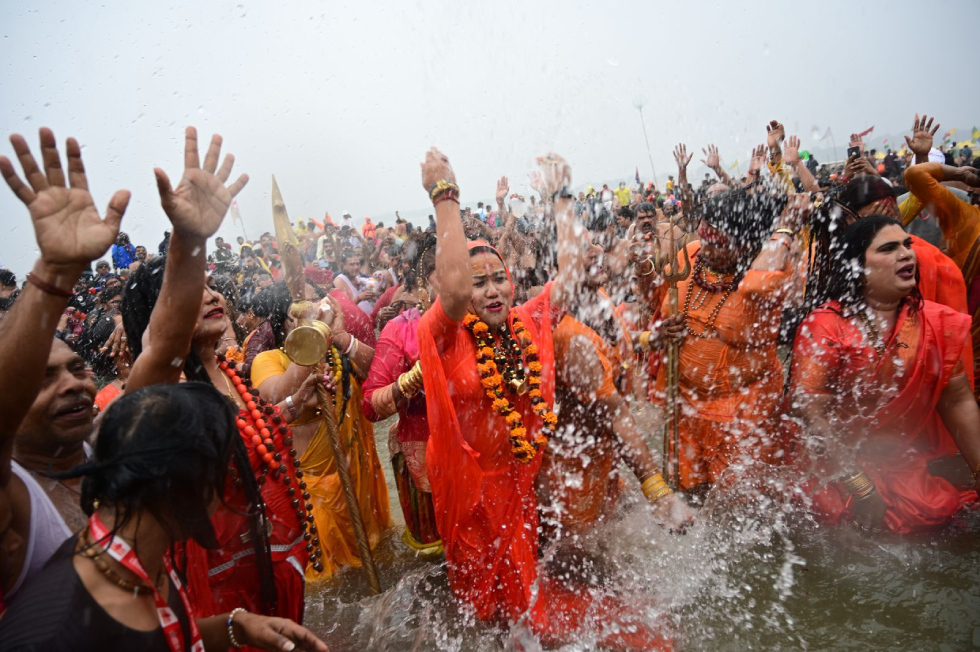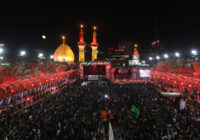Currently, In India, the mother of all gatherings is happening: the Maha Kumbh Mela. The Maha Kumbh Mela is the largest religious gathering in the world, drawing millions of pilgrims, ascetics and curious travelers to its sacred grounds. This Hindu festival occurs every 12 years in Prayagraj, India, at the confluence (sangam) of three holy rivers: the Ganga, the Yamuna and the Saraswati. The event is rooted in ancient mythology and astronomical alignments, offering spiritual purification and the promise of salvation to those who bathe in its waters.
Its origins are truly shrouded in the mists of time. Some believe the Hindu spiritual leader Adi Shankaracharya started the Kumbh Mela in the 8th century by organizing regular gatherings of ascetics. Others trace its roots even further to the Vedic period. According to Hindu mythology, a great cosmic churning of the ocean produced a pot (kumbha) filled with amrita, the nectar of immortality. A war between the gods and the demons broke out over the possession of the amrita. During this struggle, drops of the nectar spilled onto four earthly locations which now serve as the rotational sites for the Kumbh Mela. Every three years, one of these four sites hosts the festival, but the Maha Kumbh Mela in Prayagraj remains the grandest of them all.
Sacred texts like the Rig Veda praise the purifying power of these waters, and believers trust that a dip at the sangam washes away all sins, granting the spiritual liberation. Legend tells of a conversation between the river Ganga and Lord Shiva where Ganga expresses concern over accumulating the sins of those who bathed in her waters, saying: “People bathe in me to purify themselves – but then how do I get rid of all these sins?”. Shiva reassures Ganga, “when the saints come and take a bath in you, you will be purified”. True to this belief, on three especially auspicious days (this time on January 14, January 29 and February 3) revered holy people, including the photogenic Naga sadhus—ascetics from the Himalayas who come naked and covered in ash—descend upon the sangam to take their sacred plunge.
Maha Kumbh Mela 2025
While the Maha Kumbh Mela is held every 12 years, this year’s gathering is particularly special because it happens during a rare alignment of the sun, the moon, Jupiter, and Saturn – a conjunction that takes place only once every 144 years. Such a rare occurrence amplifies the spiritual significance of this year’s event. The Bible says: “For where two or three gather together as my followers, I am there among them”; now multiply this a million times and imagine the ‘I am there among them’ feeling at the sangam of these sacred rivers, and that is what you can expect from the festival this year.
This Maha Kumbh Mela is expected to see nearly 400 million people over six weeks, with up to 30 million present on peak days. It is said to be the only gathering of humans that can be seen from space, an awe-inspiring testament to human faith and devotion. Down here on earth, media outlets, photographers and YouTubers eagerly capture the event, sharing pictures of its grandeur with the world.
Attendees range from sages, saints and sadhus to politicians, celebrities and experience-seekers. Some visit to participate in religious history, while others seek salvation, personal enlightenment or simply the energy of being part of something monumental. Regardless of their motivations, all who attend share in the collective spiritual experience.
Finally, Moksha
Although I’m fairly irreligious, I’m surprised by how often I feel a surge of emotion upon entering any crowded place of worship – whether a temple, mosque, gurudwara or church. It’s not necessarily the presence of God that moves me, but rather the sheer magnitude of human belief. I can only imagine the surge of emotion while standing on the banks of the waters in Prayagraj, feeling the weight of centuries-old faith and that of the millions surrounding me.
The Maha Kumbh Mela is not about witnessing a performance, electing a leader or even hearing someone preach the word of God. It is about being present and praying at, what is believed by more than 1.2 billion people, a sacred place and time, absorbing the blessings this holy locus has to offer. The belief is that if you immerse yourself in the waters here at the confluence of these three sacred rivers and now when these celestial bodies are aligned, you will receive Moksha— liberation from the cycle of rebirth and eternal union with God. This goal contrasts sharply with modern technological pursuits that are trying to extend our lifespan and keep us out of the hands of God for as long as possible.
I find this massive gathering of pilgrims and the grand accumulation of their faith awe-inspiring and hopeful. While I lack the belief, courage or endurance to attend in person, I hope just sitting alone in my study and watching nightly updates on YouTube will be enough to bestow upon me some remote blessings.
Special thanks to Mr. M.V. Subramoni – retired civil engineer and unretired armchair religious scholar – for his fountain of knowledge on the Kumbh Mela and his enduring faith.
[Kaitlyn Diana edited this piece]
The views expressed in this article are the author’s own and do not necessarily reflect Fair Observer’s editorial policy.
Support Fair Observer
We rely on your support for our independence, diversity and quality.
For more than 10 years, Fair Observer has been free, fair and independent. No billionaire owns us, no advertisers control us. We are a reader-supported nonprofit. Unlike many other publications, we keep our content free for readers regardless of where they live or whether they can afford to pay. We have no paywalls and no ads.
In the post-truth era of fake news, echo chambers and filter bubbles, we publish a plurality of perspectives from around the world. Anyone can publish with us, but everyone goes through a rigorous editorial process. So, you get fact-checked, well-reasoned content instead of noise.
We publish 2,500+ voices from 90+ countries. We also conduct education and training programs
on subjects ranging from digital media and journalism to writing and critical thinking. This
doesn’t come cheap. Servers, editors, trainers and web developers cost
money.
Please consider supporting us on a regular basis as a recurring donor or a
sustaining member.
Will you support FO’s journalism?
We rely on your support for our independence, diversity and quality.








Comment